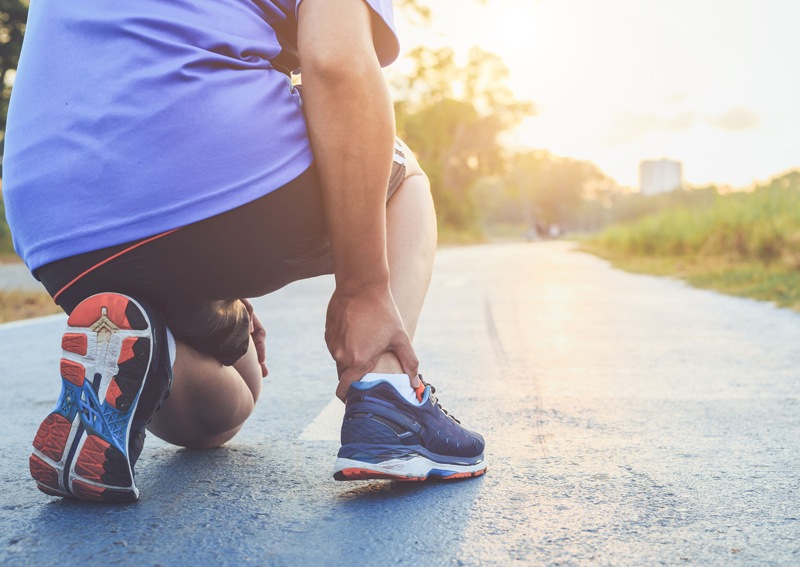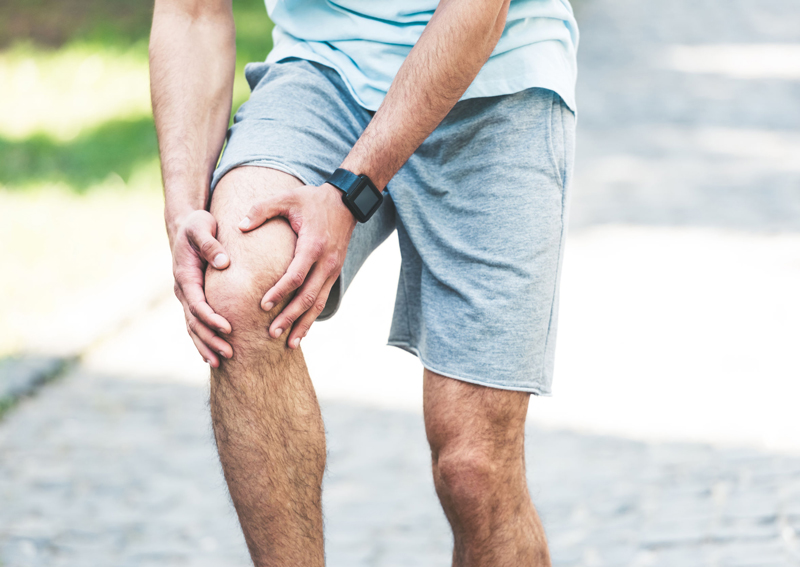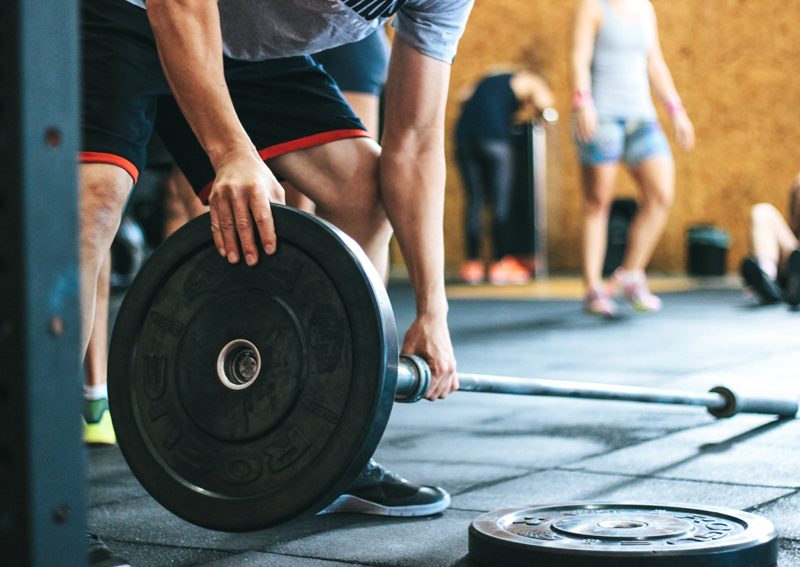WFH giving you joint and muscle aches? You might want to get it checked and here's why


 PUBLISHED ONOctober 19, 2020 10:02 AMBYBryan Lim
PUBLISHED ONOctober 19, 2020 10:02 AMBYBryan LimFor many of us, being forced to stay at home during circuit breaker was possibly the most time that we've ever stayed within the confines of the four walls that we call home.
And given the limited space that most of us have, not leaving the home meant that we remained mostly sedentary, unless you were disciplined enough to exercise regularly.
Coupled with the blurring of lines between work life and home life, many of us spent longer hours than ever hunched over our keyboards, furiously working from home (WFH).
As this was the way of life for more than just a few months, it's no wonder that aches and pains have developed. "Working from home usually entails sitting for prolonged periods and doing repetitive work such as reading and typing. This can lead to neck and back pain due to poor ergonomics and working posture, as well as muscle strain," says Dr Lingaraj Krishna, orthopaedic surgeon at Gleneagles Hospital.
Other common pains include shoulder and knee pain, and these can also be attributed to incorrect posture, shares Gleneagles Hospital orthopaedic surgeon Dr Dennis Ng.
The largely inactive lifestyle during WFH can also lead to weight gain — especially if dietary intake and snacking increase while physical activity decreases — which can lead to complaints about back and knee pain.
And if you are looking to get back on the fitness track again after long periods of inactivity, it can also result in other types of discomfort.
"When one starts to exercise after a prolonged period of inactivity, relative overloading of the joints occurs because the muscles are not able to support them adequately. This can lead to pain in the neck, back, shoulders, hips, knees, and ankles, depending on the specific exercise involved," Dr Krishna points out.
Gleneagles Hospital orthopaedic surgeon Dr Lim Yi-Jia adds that an "increase in intensity, frequency, and duration of their previous exercise regimes" coupled with insufficient recovery time could lead to injuries too.
In addition, he says: "Some have become bored with their previous exercises and started on new exercises — these new exercises require new muscle groups — which can be injured if not prepared for the sudden change in increased usage."
And if you're one of those who swore by YouTube workout videos during WFH, you might be at risk for orthopaedic injuries. Dr Lim said that "self-taught exercise with a sudden increase in activity can lead to injuries in joints, muscles, and tendon that have not been previously used that way, as the body may not be properly conditioned to cope with the strain".
Before jumping to a worst-case scenario, though, Dr Krishna noted that most of the problems patients have experienced during WFH are "temporary and self-limiting".
These problems can be rectified with simple solutions such as improving ergonomics of the home environment, taking regular breaks when sitting for prolonged periods, maintaining a healthy diet, and participating in gradual, progressive exercise programmes.
The simple answer is - when the pain or swelling has not improved after a period of time.
Dr Lim advises patients to consider seeing their family doctor after one to two weeks to assess if "any treatment or investigation is required" to avoid orthopaedic problems going unchecked.

He said: "[If left undiagnosed], this can lead to chronic injury which can present as muscle/tendon pain, joint pain, or joint stiffness, and may potentially lead to delayed treatment and a protracted course of rehabilitation and recovery."
Depending on the severity and nature of the injuries, and the type of treatments available, recovery can often be achieved, Dr Lim explains. However, the recovery potential and eventual outcomes also varies between different individuals and factors such as age, concurrent illness, compliance with medication, and rehabilitation.
It is also important to have realistic expectations as to what injuries can fully cover, what injuries can partially recover, and in some situations, the injury recovery will be incomplete and pain management becomes the focal point.
And the faster you make your healthcare decisions, the wider the treatment options available and the higher the chances of a full recovery.

Dr Krishna recalls: "I recently saw a patient who presented with pain and swelling in his knee, which developed after he exercised following a long period of inactivity. It turned out to be a condition called diffuse pigmented villonodular synovitis (PVNS), which is an aggressive tumour-like condition. He eventually needed to undergo extensive surgery to remove the growth from his knee."
And if you are worried about visiting a hospital due to the current coronavirus pandemic, be rest assured that Gleneagles Hospital has implemented safety protocols to safeguard the health of its patients, visitors and staff.
According to Dr Lim, foot and ankle pains can be related to exercising. So if you're a gym bunny, hear us out.
If you are having foot or ankle pains, it could be due to:

Dr Lim says: "One of the challenges is that the body starts to slow down between the age of 30 to 35 years old, while many people start to become more health-conscious, and may accelerate through an exercise programme too rapidly, without taking into account that their body may not be able to cope, or may take more time to recover."
If you're picking up a new exercise regime or resuming one after a period of inactivity, foot or ankle pain while moving could indicate an inflammation of the tendons or ligaments.
In the early stages, the pain may ease after some movement or warm-up. However, when the injuries become more chronic or severe, you may experience pain whenever you make a particular movement.

Dr Lim advises embarking on any new exercise programme with caution and the proper technique. The increase in intensity and duration also need to be gradual so the body is able to tolerate it.
"Cutting back when the body is hurt is not failure but wise. This can give the body the needed time to recover," he added.
While exercising is good, you can have too much of a good thing. If you go overboard with your exercise regime, this can lead to "overuse injuries of the musculoskeletal tissues, such as joints, muscles and tendons", shares Dr Krishna.
He explains: "This is because the tissues are not accustomed to the increased loads that are being placed on them. For example, patellofemoral pain syndrome is the most common problem affecting the knee joint. This refers to pain arising from the knee cap region due to overuse."

Other conditions involving knee or hip pain include tears of the menisci (shock absorbers of the knee) and injuries to the cartilage and ligaments.
Those who are aged 50 and above, as well as those who are overweight are more susceptible to hip or knee problems. The former are at increased risk of developing degenerative or wear and tear problems in their joints while the latter might suffer from overloading of the joints (due to the extra weight) resulting in injuries and pain in the hip and knee joints.
It may sound like nagging when those around you ask you to watch your posture, but you may want to heed their advice. This is because bad posture, poor ergonomics, working in front of the computer screen for an extended period of time and unaccustomed physical activity are common causes of shoulder and elbow pain, says Dr Dennis Ng.

These can cause inflammation of the tendons and ligaments around the shoulder, and potentially develop into something more serious like a frozen shoulder that results in significant pain and limitation of range of motion.
Shoulder pain and injury may also imply underlying conditions such as tears involving the labrum (the cup-shaped rim of cartilage that lines and reinforces the ball and socket joint of the shoulder) or rotator cuff (the group of muscles and tendons that surround the shoulder joint).
Multiple shoulder pathology can also occur at the same time, according to Dr Ng. He once had a patient who was referred from the physiotherapist for a frozen shoulder. Despite regular physiotherapy, there was minimal improvement in his symptoms.
Dr Ng says: "Clinical evaluation and MRI scan subsequently showed a rotator cuff tear in addition to the frozen shoulder. He was visiting the gym more regularly and could have tore his rotator cuff when doing weights."

The patient eventually underwent a keyhole surgical procedure to repair the torn tendon. In cases where the tear is minor, it can be managed with physiotherapy.
To reduce the risk of such injuries, here are some tips to take note of:
As Singapore approaches phase 3 and life gradually returns to the way it was, continue to exercise caution when participating in physical activities as prevention is always better than cure. And should you have an injury, don't wait too long to get medical help.
You can even skip long queues and waiting time by making an appointment with Gleneagles Hospital, where you can see an orthopaedic specialist within 48 hours. After all, early intervention results in a higher chance of full recovery.
If you or your family members require treatment for a medical condition, make an appointment with a specialist or visit GEH's 24-hour clinics.
This article is brought to you in partnership with Parkway Pantai.
bryanlim@asiaone.com